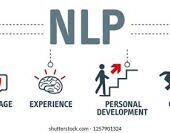How Everyone Can Contribute to a Net Zero Future
The increasing frequency and unpredictability of extreme weather events highlight that climate change spares no part of the world. Addressing this crisis urgently requires smart, innovative solutions. Every organization, government, and individual has a role to play, asserts Linda Saunders, Salesforce’s Director of Solutions Engineering Africa. Contribute to Net Zero. Let’s face it, if you’re not part of the solution, you’re part of the pollution!
The Path to a Net Zero Future
For companies, taking tangible climate action is crucial for maintaining their brand, reputation, and financial stability. Plus, who doesn’t want to be known as the eco-friendly company that saves the planet? To avoid the most severe impacts of climate change and meet critical climate goals for a 1.5-degree future, it is not enough to merely reduce emissions. We must also remove significant amounts of carbon dioxide (CO2) from the atmosphere and oceans. Public and private sectors need to invest in scaling and deploying clean energy technologies, such as renewable energy, and support organizations leading the clean energy transition to ensure economic and environmental prosperity for all communities. Think of it as the ultimate “spring cleaning” for our planet!
Land-based methods of carbon reduction include afforestation, reforestation, agricultural practices that sequester carbon in soils (carbon farming), bioenergy with carbon capture and storage (BECCS), and direct air capture combined with storage. There are also CDR methods that use oceans and other water bodies.
Salesforce has made three major climate investments to expedite a just energy transition. The company has joined Frontier, an advanced market commitment (AMC) to collectively purchase more than billion worth of permanent carbon removal by 2030. As part of this initiative, Salesforce has pledged million to accelerate, scale, and commercialize the most promising carbon removal technologies. Because sometimes, you’ve got to put your money where your mouth is—or in this case, where your carbon isn’t.
Combining Long-Term Strategy with Short-Term Action
The primary goal on the journey to net zero must be reducing emissions. Each organization should set a 1.5-degree target aligned with science-based goals, focusing on significantly reducing its absolute scope one, two, and three emissions. Achieving these targets requires long-term systemic changes, which take time to implement. So while you’re busy planning your eco-friendly future, you might as well start making a difference now.
High-quality carbon credits, when properly made and used, can play a critical role in a comprehensive climate strategy. Businesses aiming for long-term emission reductions can supplement their efforts with high-quality carbon credits. Projects may include:
- Forest conservation
- Tree planting
- Wind farms
- Solar cookstoves
- Improved farming methods
Or as we like to call it, the environmental bingo card.
Closing the Sustainability Talent Gap
To achieve a net-zero future, all roles should integrate sustainability. We need a diverse workforce of qualified individuals, from carbon accountants to scientists to ecopreneurs. Imagine being able to introduce yourself as a “carbon wrangler” at your next party! Despite the pressure to meet ambitious climate goals, businesses face a severe shortage of sustainability talent. Upskilling existing workers who want to transition into sustainability careers can help fill hard-to-find roles and align employees’ work with their passions.
Understanding Personal and Corporate Sustainability
As sustainability remains a priority for stakeholders, business leaders must combine short-term solutions with long-term operational changes. By re-evaluating how to create, hire, and retain sustainability roles and providing the necessary tools and training, companies can ensure everyone contributes to the movement towards a net zero future. After all, saving the planet isn’t just a job—it’s an adventure!













